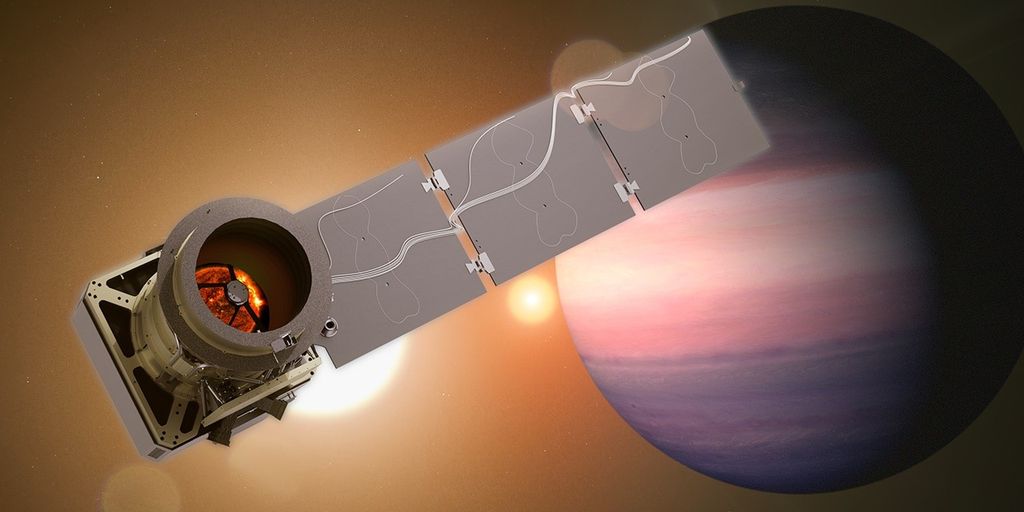1 min read
Illustration of Exoplanet 55 Cancri e and Its Star
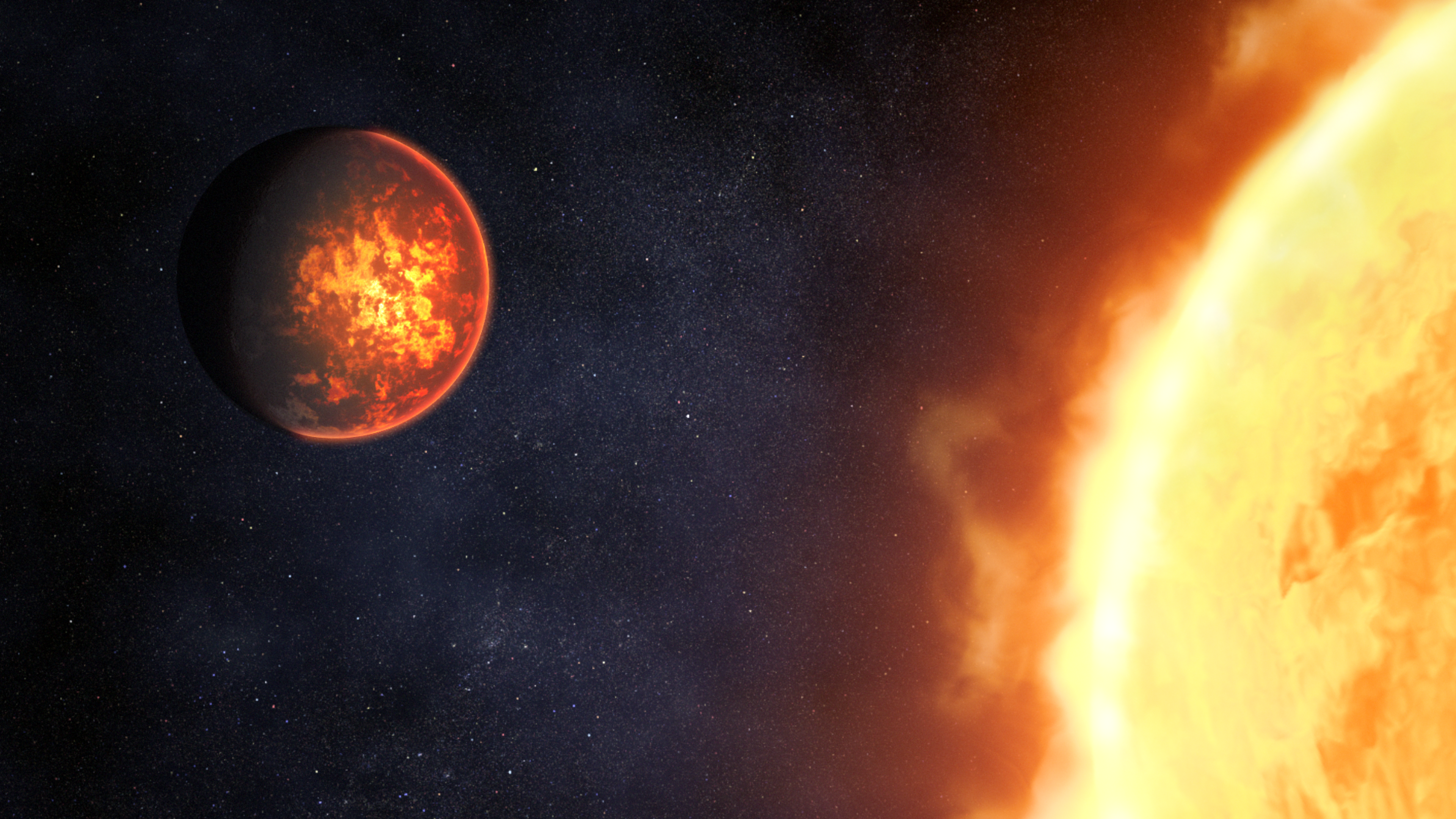
Illustration showing what exoplanet 55 Cancri e could look like, based on current understanding of the planet.
55 Cancri e is a rocky planet with a diameter almost twice that of Earth orbiting just 0.015 astronomical units from its Sun-like star. Because of its tight orbit, the planet is extremely hot, with dayside temperatures reaching 4,400 degrees Fahrenheit (about 2,400 degrees Celsius).
Although previous studies have ruled out a thick hydrogen, carbon dioxide, or water atmosphere, it is possible that the planet has a substantial atmosphere made of oxygen or nitrogen, or a very thin atmosphere of mineral vapor, such as silicon oxide.
Researchers think that if the planet is tidally locked, the lit surface must be permanently molten. If the planet is not locked, it would experience day-night cycles, with the surface heating up and melting during the day, and cooling and solidifying at night. The extreme heat during the day would also cause some of the molten rock to vaporize, forming a very tenuous mineral vapor atmosphere. In the evening, this vapor would condense and fall as a rain of lava back onto the surface, where it would turn solid overnight.
Spectroscopic observations using Webb’s Near-Infrared Camera (NIRCam) and Mid-Infrared Instrument (MIRI) will help determine whether or not the planet has an atmosphere, and if so, what that atmosphere is made of. The observations will also help determine whether or not the planet is tidally locked.
About the Object
- R.A. PositionR.A. PositionRight ascension – analogous to longitude – is one component of an object's position.08:52:35.24
- Dec. PositionDec. PositionDeclination – analogous to latitude – is one component of an object's position.+28:19:47.34
- ConstellationConstellationOne of 88 recognized regions of the celestial sphere in which the object appears.Cancer
- DistanceDistanceThe physical distance from Earth to the astronomical object. Distances within our solar system are usually measured in Astronomical Units (AU). Distances between stars are usually measured in light-years. Interstellar distances can also be measured in parsecs.41 light-years from Earth
About the Data
- Data DescriptionData DescriptionProposal: A description of the observations, their scientific justification, and the links to the data available in the science archive.
Science Team: The astronomers who planned the observations and analyzed the data. "PI" refers to the Principal Investigator.
- Object NameObject NameA name or catalog number that astronomers use to identify an astronomical object.55 Cancri e
- Object DescriptionObject DescriptionThe type of astronomical object.Very hot super-Earth exoplanet orbiting a Sun-like star
- Release DateMay 26, 2022
- Science ReleaseGeology from 50 Light-Years: Webb Gets Ready to Study Rocky Worlds
- CreditArtwork: NASA, ESA, CSA, Dani Player (STScI)
Related Images & Videos
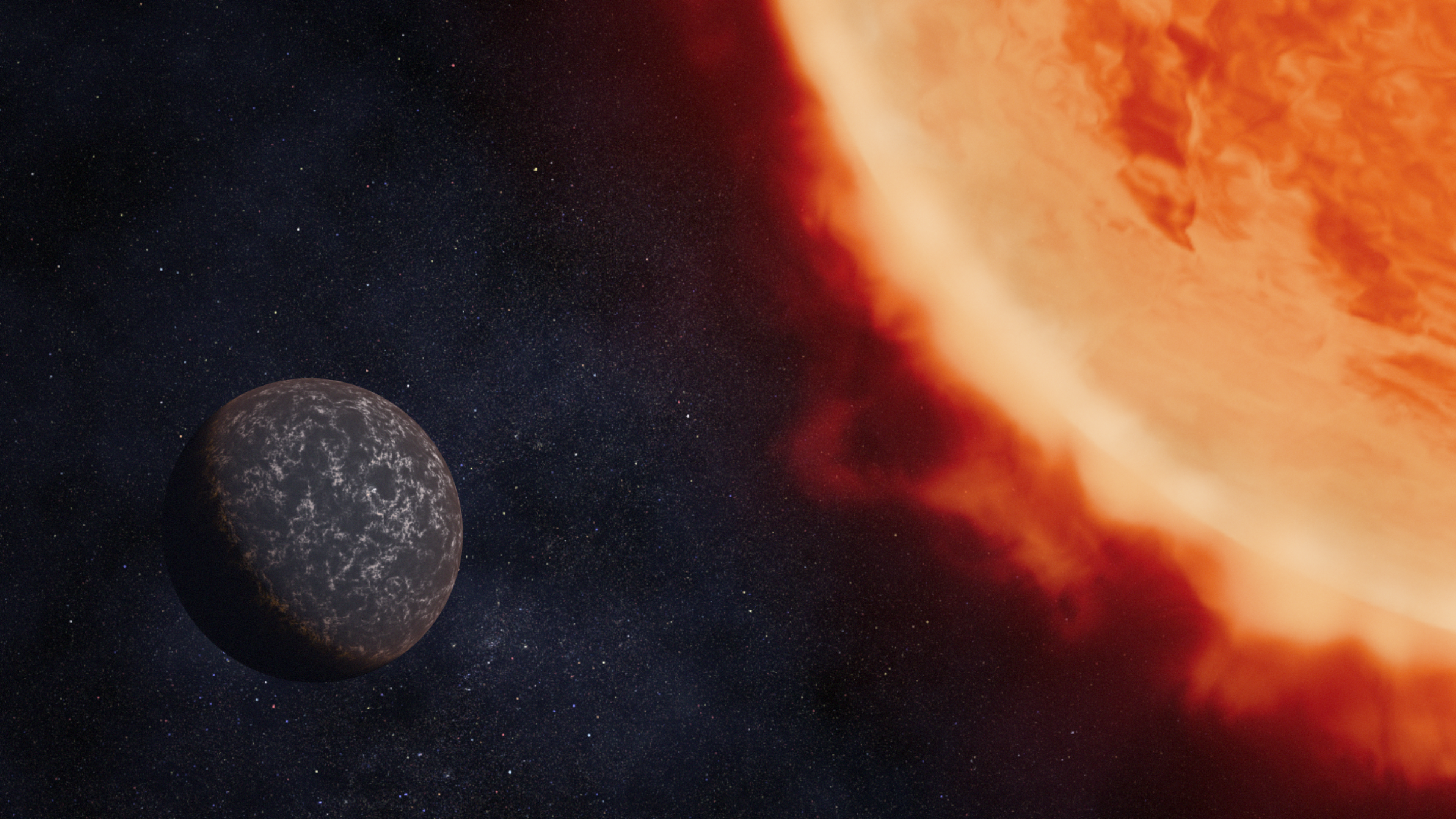
Illustration of Exoplanet LHS 3844 b and Its Star
Illustration showing what exoplanet LHS 3844 b could look like, based on current understanding of the planet. LHS 3844 b is a rocky planet with a diameter 1.3 times that of Earth orbiting 0.006 astronomical units from its cool red dwarf star. The planet is hot, with dayside...
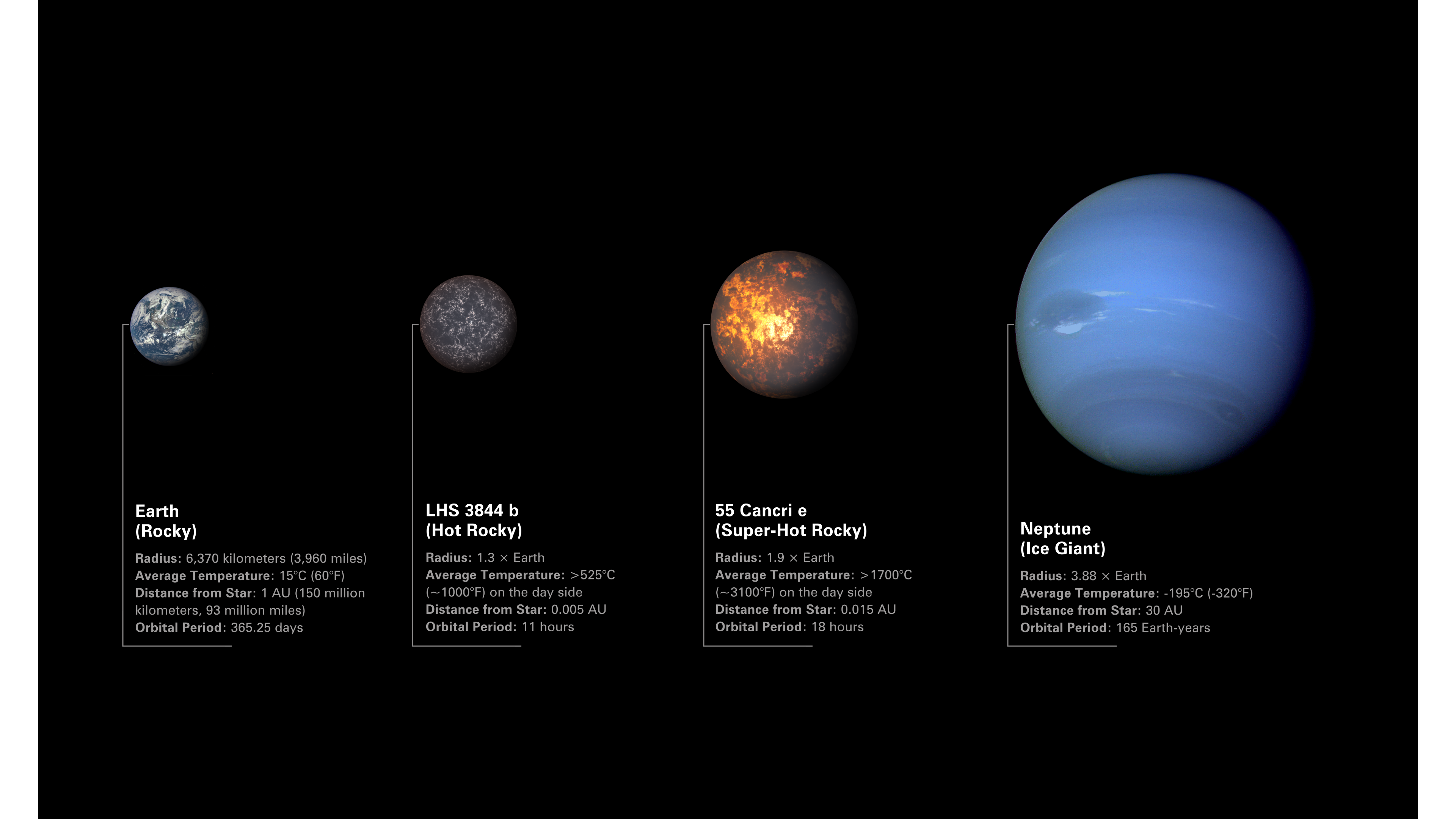
Comparison of Exoplanets 55 Cancri e and LHS 3844 b to Earth and Neptune
Illustration comparing rocky exoplanets LHS 3844 b and 55 Cancri e to Earth and Neptune. Both 55 Cancri e and LHS 3844 b are between Earth and Neptune in terms of size and mass, but they are more similar to Earth in terms of composition. The planets are arranged from left to...
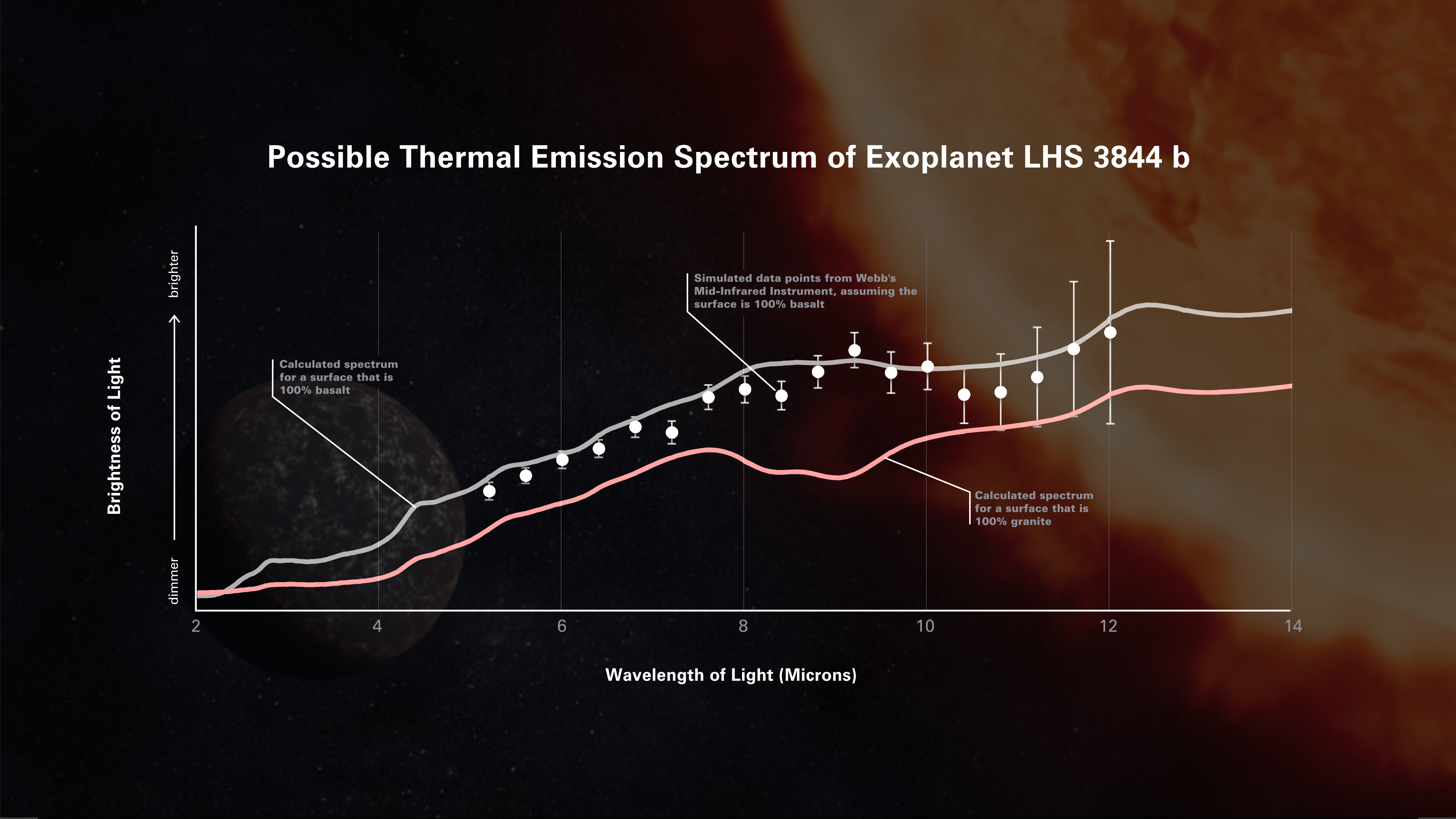
Simulated Thermal Emission Spectrum of Exoplanet LHS 3844 b
Possible thermal emission spectrum of the hot super-Earth exoplanet LHS 3844 b, as measured by Webb’s Mid-Infrared Instrument. A thermal emission spectrum shows the amount of light of different infrared wavelengths (colors) that are emitted by the planet. Researchers use...
Share
Details
Laura Betz
NASA’s Goddard Space Flight Center
Greenbelt, Maryland
laura.e.betz@nasa.gov
NASA, ESA, CSA, Dani Player (STScI)




